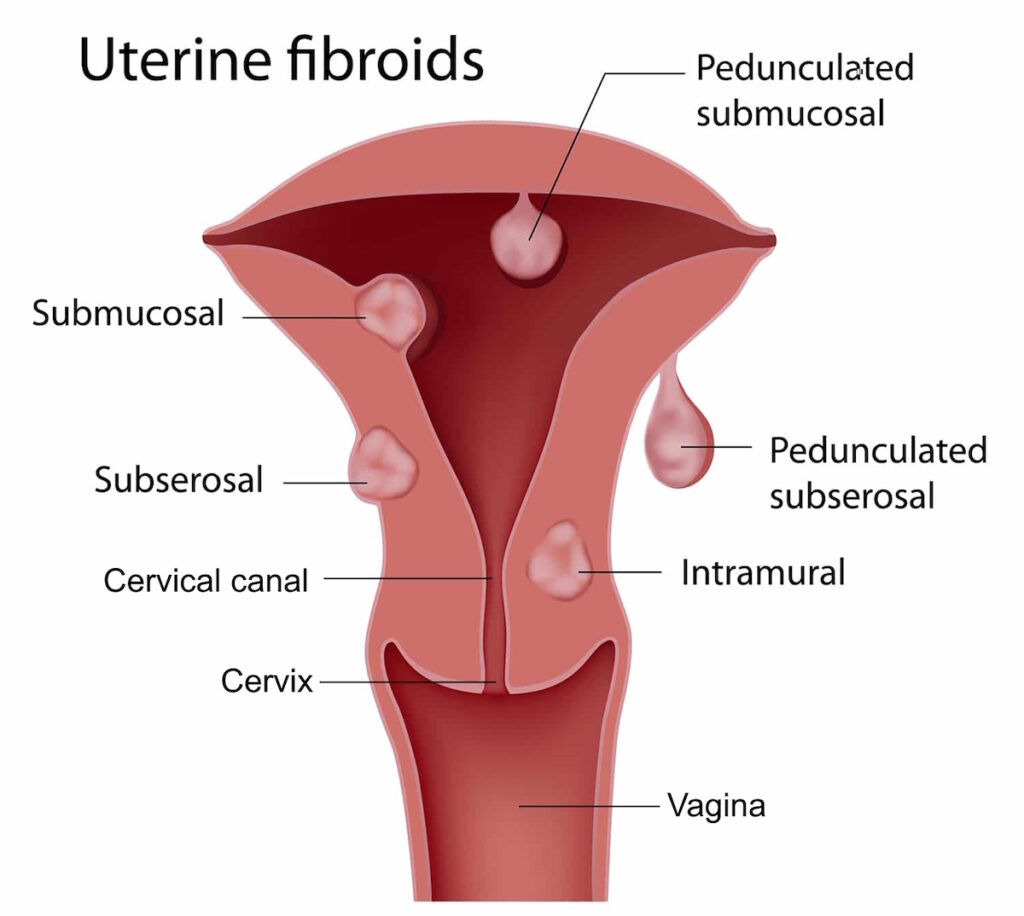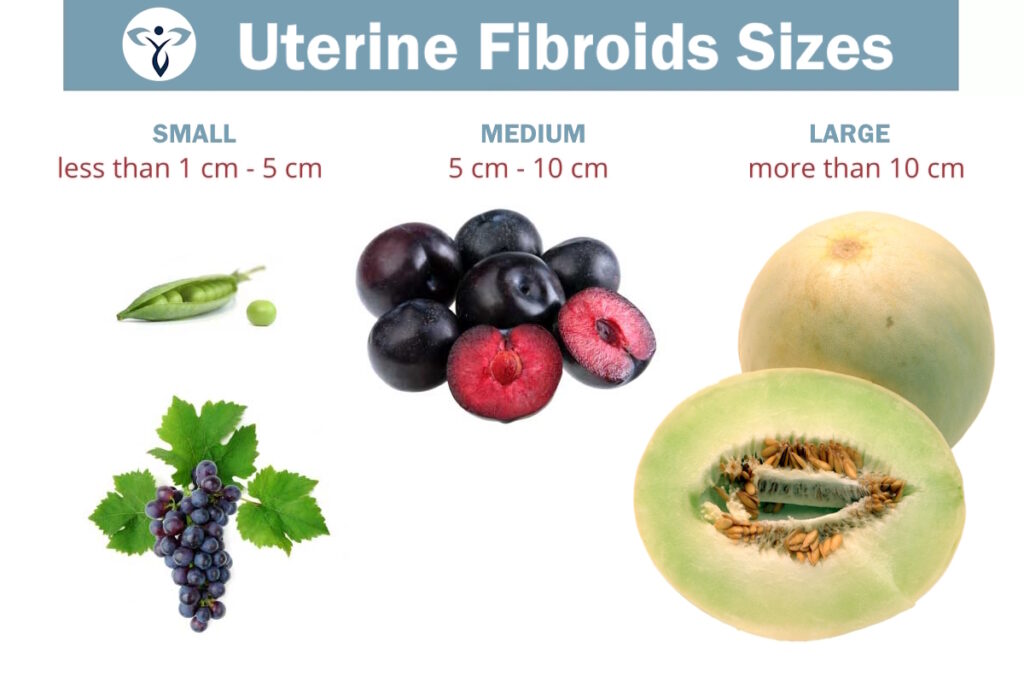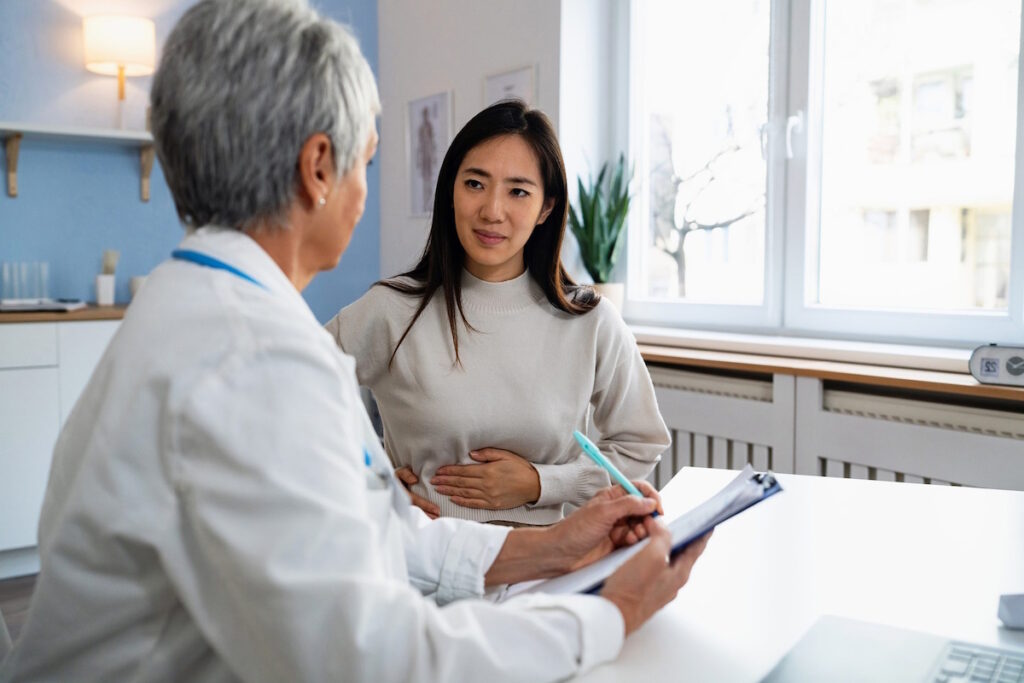When Melanie* was diagnosed with uterine fibroids last year, the first request she had for her gynecologist was that she wanted to avoid surgery. In her words, having a hysterectomy was “the absolute last resort.” Thankfully, her doctor agreed and even insisted that fibroid surgery was not her only option. Fibroid treatment alternatives, such as UFE (Uterine Fibroid Embolization), were faster, less invasive, and extremely effective in treating the painful symptoms she had been experiencing for a long time. Naturally, Melanie was willing to try anything, though she could not help but be a little apprehensive. After all, she did not have just one or two bothersome fibroids. There were several of them, varied in size and located within and around her uterus. Could UFE handle all of them with ease?
This is a common concern among women with fibroids, especially given the amount of misinformation and lack of education that still exists regarding this important yet under-discussed women’s health topic. Search online, and you might find that UFE is ideal for all types of fibroids, regardless of size, type, or location. Dive deeper or talk to a friend or doctor, and you might hear conflicting information that says UFE might not be effective for all fibroids—particularly larger fibroids and those that hang from stalks, called pedunculated fibroids.
Every woman’s fibroid journey is different. Not every patient is a candidate for UFE—no matter how much we want them to be. Sometimes, fibroid surgery is the best path. That said, we believe in UFE’s overall effectiveness in treating ALL fibroids. It is what we do every day, and our team of fibroid doctors at Fibroid Institute Texas—specialized experts known as interventional radiologists—wants you to know the truth so that you can make informed decisions and feel confident about your fibroid treatment choice.
Imagine Freeing Yourself From These Fibroid Symptoms
- Painful periods, including heavy or inconsistent cycles
- Debilitating cramps, pelvic pain, and pressure
- Back or leg pain
- Bloating or swelling in the lower abdomen
- Weight gain
- Pain during sexual intercourse
- Urinary frequency
- Constipation, diarrhea, and rectal discomfort
- Fatigue, dizziness

No Two Fibroids May Be the Same
We likely do not need to tell you by now that uterine fibroids are very common. These noncancerous tumors develop from the muscle tissue of your uterus; sometimes, they are painless. Other times, they can lead to many of the symptoms outlined above. Researchers estimate that 70-80 percent of all women develop fibroids between the ages of 35 and 54. Perhaps the most interesting part for these women is that their fibroids—while small at first—tend not to remain the same size over time. They also multiply and can grow in different locations.
The Office of Women’s Health breaks fibroids down into four types depending on location:
1. Intramural fibroids
These types of fibroids grow inside the muscles of the uterine wall and can cause issues with uterine function. These are the most common types of fibroids, accounting for approximately 70% of uterine fibroids and affecting one in four women of childbearing age.
2. Submucosal fibroids
Slightly different from their counterparts, these fibroids protrude from underneath the uterine lining and into the uterine cavity itself. Women with one or several submucosal fibroids will likely notice heavy bleeding during menstruation and increased abdominal pain.
3. Subserosal fibroids
These are easy to spot because they tend to grow just outside the uterine walls. As a result of their location and varying sizes, they are known for pressing against or generally impacting surrounding organs. For instance, they may press against the bladder, bowels, and abdomen, leading to a range of symptoms, including changes in urinary frequency, lower back pain, and abdominal pain.
4. Pedunculated fibroids
These types of fibroids hang by a thin thread or stalk inside or outside the uterus. Inside the uterus, this type of growth is called a pedunculated submucosal fibroid. Outside the uterus, it is called a pedunculated subserosal fibroid. Symptoms can include pain in the abdominal area due to obstruction of the uterus and surrounding organs, prolonged menstrual bleeding, cramping, and unexpected sharp pains.

Given the varying sizes, shapes, and locations of fibroids, it is only natural to assume that any treatment option you are a candidate for can become more complicated or even ineffective. In terms of size, fibroids can vary from the size of a pea or bean to a melon or grapefruit. So, what is considered a large fibroid?
- Small Fibroids — Between 1 cm and 5 cm. Basically, the size of a small seed to a cherry.
- Medium Fibroids — Between 5 cm to 10 cm. Can be the size of a lime or lemon to an orange.
- Large Fibroids — Fibroids are considered large if they exceed 10 cm. Many women and their doctors compare them to the size of a mango, grapefruit, watermelon, or even a small pumpkin.
Fibroid Treatment with UFE and Other Options
One of the most successful non-surgical treatment options is UFE (Uterine Fibroid Embolization). This is a minimally invasive procedure that cuts off blood flow to the fibroids, causing them to shrink and die. What you are left with is relief from painful fibroid symptoms—and your uterus intact. But here is the best part.
UFE is the treatment of choice for our qualified patients because it treats all fibroids simultaneously. It is a myth that UFE can’t handle large fibroids. Surprisingly, some doctors who do not perform UFE think this and advise their patients accordingly. In fact, UFE is one of the top procedures for handling large fibroids. In some cases, it is used to safely shrink large fibroids before fibroid removal surgery to ensure a less bloody surgery and more successful outcome.
Therefore, with UFE there is no need to worry about limitations based on your unique fibroid size, location, or growth rate.
This may not be the case with other fibroid treatment options. For instance, Acessa treatment involves inserting a small, heated probe into a fibroid, thus destroying it. However, there are limitations if you have multiple large fibroids or fibroids that are difficult to access. With endometrial ablation, doctors place a thin instrument into the uterus through the cervix and use heat, laser, electricity, microwaves, or freezing. That said, it is only for fibroids located within the interior uterine lining. It will not treat fibroids outside of this space. Even the Sonata System, which uses radiofrequency energy to shrink fibroids, is not recommended for all fibroids. Sonata works well when the patient has one or several fibroids and/or non-pedunculated submucosal fibroids. Fibroids larger than 5.0 cm may require multiple ablations.

Here’s how UFE works
- It involves making only a tiny puncture on your left wrist
- A very small catheter is then inserted through this into your artery
- Our fibroid experts use X-ray guidance to locate the vessels that supply blood to your large fibroids.
- Small particles are injected into the vessels, blocking blood flow to the fibroids, causing them to shrink and die.
UFE can shrink all fibroids. Even if the fibroid is the size of a pumpkin, the procedure can shrink it up to 50% on average and, more importantly, cause the fibroid to be classified as dead.
A live fibroid usually has the consistency of a solid rubber ball because it has an active blood supply to feed it. Meanwhile, a dead fibroid no longer has that blood supply and, therefore, has the consistency of toothpaste.
While mass can remain after UFE, symptom relief does not always depend on volume reduction. It can depend on whether the fibroid is dead, as it no longer exerts pressure on surrounding structures.
What About Pedunculated Fibroids?
Great question. The main difference between pedunculated fibroids and other fibroid types is the stalk itself—this stalk is what fibroid doctors call the peduncle. That said, it is still non-cancerous and no less treatable than other types of fibroids. In terms of how we treat them, it depends on whether they are located inside or outside the uterus.
If they are inside the uterus, the stalk may break down, and the fibroid may come out. If it is too large to pass through the cervix (over 3 cm), we create a plan for the gynecologist to remove it through the cervix after the fibroid has shrunk slightly and softened—typically around three months post-UFE.
If the fibroid is on a stalk that hangs outside the uterus, it typically does not cause any problems.
The bottom line: While it is fantastic that conversations are happening more frequently about fibroids and various treatment options, women need to know that they shouldn’t trust everything they see online or hear from other people. There is a lot of conflicting information available, some of which is based on outdated data. Therefore, it is wise to have an open and honest conversation with your doctor. If you require more specialized answers based on your unique fibroid journey, they may refer you to Fibroid Institute.

We hope that by continuing to share accurate information, whether through these blog articles or in person with our current or prospective patients, we can help women stay informed in the right ways.
Fibroid Institute is Home to UFE, the Gold Standard for Fibroid Treatment
It is challenging enough when you have symptomatic fibroids. The last thing you need is to worry about whether your chosen fibroid treatment will work. UFE is the gold standard for nonsurgical fibroid treatment—not just because it eliminates the threat of surgery, but also because it treats all fibroids simultaneously. Fibroid Institute Texas is here to do just that.
We set the standard of care for advanced fibroid treatment and help women achieve a symptom-free life. Very few practices across the country are dedicated 100% to fibroid treatment. That is where Fibroid Institute makes its mark. The concierge model at Fibroid Institute means patients get personalized and complete care from the initial consultation through post-procedure follow-ups. UFE patients can access their fibroid doctor’s mobile number to call or text with questions and concerns.
At Fibroid Institute Texas, we do not believe you need to decide between suffering in silence and having invasive surgery. With multiple locations, our Dallas and Houston fibroid doctors help thousands of women avoid fibroid surgery and find relief from their fibroid symptoms. Meet some of these women here:
Our Houston and Dallas fibroid doctors are board-certified interventional radiologists and experts who are passionate about helping women become #FibroidFree. Because experience matters, our physicians have completed more than 40,000 interventional radiology cases over the course of a combined 55 years of experience. We invite you to connect with our highly specialized UFE treatment team who offers concierge-level care.
Most major medical insurance providers cover the cost of UFE. Get started now by calling our Dallas fibroid clinics at 214-838-6440, our Houston fibroid clinics at 713-903-3733, or by completing complete the form below.
Fibroid Institute Texas serves the Dallas and Houston metro areas including Richardson, Dallas, Sherman, Houston, Sugar Land, Katy, Webster, Clear Lake, The Woodlands, Universal City, Spring, Kingwood, Stafford, Conroe, Texas City, Cypress, League City, Bellaire, Addison, Carrollton, Plano, Frisco, Craig Ranch, McKinney, Allen, Fort Worth, Grand Prairie, Hurst, Euless, Bedford, Arlington, Hutchins, Irving, Duncanville, DeSoto, Cedar Hill, Lancaster, Cockrell Hill, Highland Park, University Park, Park Cities, Garland, Mesquite, and more.
This information is not a substitute for professional medical advice. Prior to starting any new treatment or if you have questions regarding a medical condition, always seek the advice of your doctor or other qualified health provider.
*Patient names and/or photos may be changed to protect patient confidentiality.

